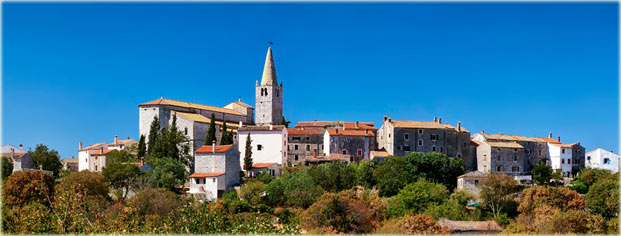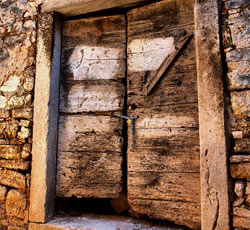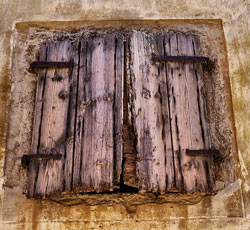-
Oblasť Bale, ktorá sa nachádza v blízkosti miest Rovinj, Vodnjan, Kanfanar a Svetvinčenat, je chránená oblasť Istrie, ktorá sa vyhla akýmkoľvek formám ničenia a dnes si môžu miestni obyvatelia s hrdosťou povedať, že ich domov je v oblasti prírodných krás, obklopený nedotknutým prírodným bohatstvom a bohatého kultúrneho a architektonického dedičstva. Bale sa rozprestiera na 81 kilometroch štvorcových a jeho populácia je 1295 ľudí.
Bale (Rovinj, Istria)
Bale, Travel Guide for holidays in Bale, Istria
Bale – Points of interests
 The town of Bale, entirely made of stone,was built on the top of the limestone fortress. It symbolizes Istrian tradition and it existed, according to archaeological research, since the Roman period when it was known under the name Castrum Vallis. Fort Bale protected the trade route between Pula and the interior of the peninsula. The Roman Castrum became a walled little town in medieval times. Today the Roman Castrum Vallis is a small town whose historical core is located 145 meters above the sea level, surrounded by hills. The Italian name „Valle“ means valley, and Bale is the valley positioned between hills Monleme, Skvacota, Pizanovac and Veli Majan; Pastrovicev vrh, Sv Nedjelja, Brigonera, Mongrizeja and Sokol. The most interesting buildings preserved to our days are Venetian Gothic building of the court and the Gothic Renaissance castle form th 15th century which was the residence of the family Soardo Bembo. The area of Bale forms a whole with arable land, pastures, forests in which one can easily come across the remains of old buildings, Roman roads, water tanks, wells, Roman villas, oil presses, churche. From religious buildings there is a church from the 14th century deidcated to St. Anthony and the Romanesque church of St. Elizabeth. The 45th parallel goes straight through the narrowest part of the district of Bale, which means that the district is ideally positioned as regards the planet – half way between the Equator and North Pole. The average temperature in Bale is 14 degrees centigrade and the town has 2400 sunny hours on average a year, which has attracted huge numbers of tourists to the place – a treasure surrounded by the greenness of the flora and blueness of the sea.
The town of Bale, entirely made of stone,was built on the top of the limestone fortress. It symbolizes Istrian tradition and it existed, according to archaeological research, since the Roman period when it was known under the name Castrum Vallis. Fort Bale protected the trade route between Pula and the interior of the peninsula. The Roman Castrum became a walled little town in medieval times. Today the Roman Castrum Vallis is a small town whose historical core is located 145 meters above the sea level, surrounded by hills. The Italian name „Valle“ means valley, and Bale is the valley positioned between hills Monleme, Skvacota, Pizanovac and Veli Majan; Pastrovicev vrh, Sv Nedjelja, Brigonera, Mongrizeja and Sokol. The most interesting buildings preserved to our days are Venetian Gothic building of the court and the Gothic Renaissance castle form th 15th century which was the residence of the family Soardo Bembo. The area of Bale forms a whole with arable land, pastures, forests in which one can easily come across the remains of old buildings, Roman roads, water tanks, wells, Roman villas, oil presses, churche. From religious buildings there is a church from the 14th century deidcated to St. Anthony and the Romanesque church of St. Elizabeth. The 45th parallel goes straight through the narrowest part of the district of Bale, which means that the district is ideally positioned as regards the planet – half way between the Equator and North Pole. The average temperature in Bale is 14 degrees centigrade and the town has 2400 sunny hours on average a year, which has attracted huge numbers of tourists to the place – a treasure surrounded by the greenness of the flora and blueness of the sea. Photo to buy
| If you want to buy one of teh next photos please send us an e-mail at info@istriasun.com | ||||
 |  | |||